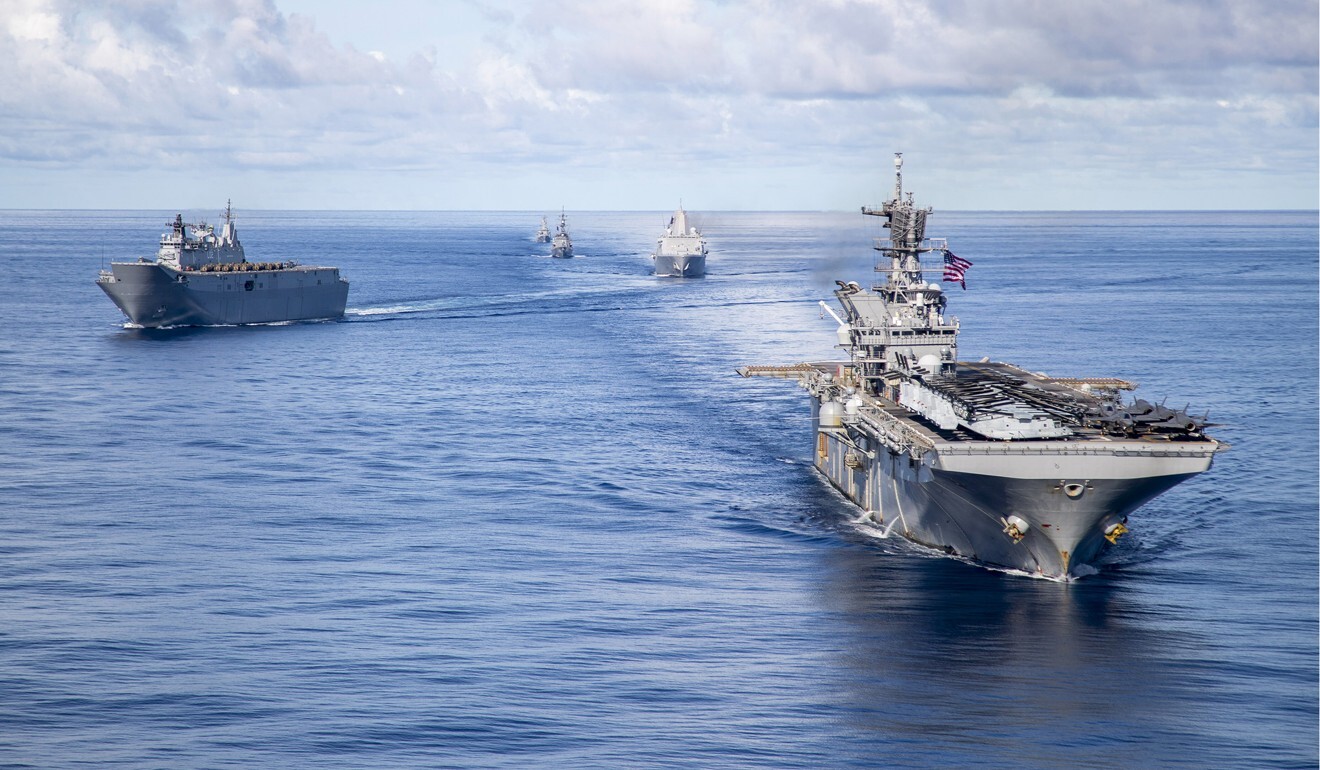
Explainer | What is the Indo-Pacific region and why does the US keep using this term?
- Washington for decades referred to the vast stretch of territory between Australia and India as the Asia-Pacific but the ‘strategic lexicon’ shifted under Trump
- Yet the Biden administration continues to define the region as Indo-Pacific, in line with the US foreign policy response to China’s growing influence
Affirming that Washington would support its allies in the region against Beijing’s advances, Harris also laid out the Biden administration’s vision for the region, saying the US would “stand united with our allies and our partners in Southeast Asia in defence of a free and open Indo-Pacific”.

When was the term ‘Indo-Pacific’ introduced?
For decades, the vast expanse of territory stretching from Australia to India was referred to in Washington as “Asia-Pacific”, although “Indo-Pacific” was commonly used among foreign policy experts, mainly in India, Indonesia and Australia.
H.R. McMaster, who served as Trump’s national security adviser for 14 months, used the term repeatedly when talking to reporters about Trump’s visit to the Philippines, Vietnam, China, South Korea and Japan.
What does the term reveal about US foreign policy?
This alliance, known as the Quad, seeks to counter China by bringing together US allies in support of the “rules-based international order” and to defend international norms allegedly breached by Beijing.
Mike Pompeo, who replaced Rex Tillerson as secretary of state under Trump, emphasised that the international community needed to form “a new alliance of democracies” against China.
Will Indo-Pacific become the new battleground for alliances led by US and China?
John Bradford, a senior maritime security fellow at the S. Rajaratnam School of International Studies (RSIS) in Singapore, said the repeated use of the term indicated the Biden administration “has fully embraced the term as part of the strategic lexicon inherited from the Trump administration”.
One reason the US uses “Indo” in the term Indo-Pacific is because it highlights India’s importance in dealing with China, said Charles Dunst, an associate with geopolitical risk firm Eurasia Group’s Global Macro practice.
“For the US, the Indo-Pacific is valuable because it’s broad – it includes everything from India to New Zealand – and the US intends to challenge China in all of these places,” Dunst said, adding that the Biden administration had stuck with the term not out of affinity with Trump, but because “Indo-Pacific” more effectively conveyed the president’s plan to challenge China not only in East Asia, but also beyond.
What is the US strategy in the Indo-Pacific?
“I believe that when the history of the 21st century is written, much of it will be centred right here in the Indo-Pacific,” she said on Tuesday. “Our intention is to strengthen our partnerships and reinforce our shared vision … In doing so, there should be no doubt – we have enduring interests in this region, and we have enduring commitments as well.”
What is the Quad, and how will it impact US-China relations?
Bradford said the US recognises Indo-Pacific has become a vital strategic and economic region. Accordingly, the US seeks to preserve stability and rule of law, while also countering China’s influence.
“By supporting its partners and allies, the US seeks to prevent Chinese regional dominance and retains its positive partnerships,” Bradford said.
A report by the University of Sydney’s US Studies Centre, to be released on Friday, concludes the Biden administration’s approach to the Indo-Pacific has lacked focus and urgency.
“Despite its deep regional expertise and the region’s high expectations, [the US] has failed to articulate a comprehensive regional strategy or treat the Indo-Pacific as its decisive priority,” said the report, Correcting the Course: How the Biden Administration Should Compete for Influence in the Indo-Pacific written by Ashley Townshend, Susannah Patton, Tom Corben and Toby Warden.
Why Chinese pleasure over US fiasco in Afghanistan will be short-lived
Dunst said the primary focus of the Indo-Pacific strategy is preventing conflict – particularly involving China in, say, the South China Sea – by strengthening the Quad and challenging Beijing, mostly with statements and diplomacy.
“The secondary focus is competing with China for favour in the Indo-Pacific to advance American standards and values,” Dunst said, adding that while US leaders are warmly received in India, Vietnam and Singapore, Washington faces real challenges with other powers in the region such as Indonesia and Thailand, which tend to balance the US and China and will therefore avoid antagonising Beijing.
“The major elephant in the room is that China’s development financing for the region vastly outpaces that of the United States – and that most Indo-Pacific countries value economic cooperation more than security ties. In the Indo-Pacific, money talks, and for years nobody has been as loud as China has,” Dunst said, pointing out that for now, Washington’s Indo-Pacific strategy remains security-focused, with economics trailing behind.
Why has the US offered to host Apec in 2023?
Harris also confirmed the US would host the next Asia-Pacific Economic Cooperation (Apec) forum in 2023, underlining the importance of Southeast Asia’s dynamic market to the US.
Harris noted that Southeast Asian countries combined are the fourth-largest export partner of the US, with these trade relations supporting more than 600,000 American jobs.
Dunst said that former president Trump had repeatedly sent downgraded delegations to Apec, the East Asian Summit, and the US-Asean Summit, disappointing and even angering Southeast Asian leaders.
“By hosting Apec, the Biden administration hopes to assure Southeast Asia that ‘America is back’, that they can once again trust the United States,” Dunst said, adding that since Myanmar and Cambodia are not Apec members, Biden will not be forced to shake hands with Min Aung Hlaing and Hun Sen, the two leaders of Myanmar and Cambodia
As India watches Afghanistan nervously, upheaval could reshape US, China ties
Bradford from RSIS said hosting Apec would show the US is again fully engaged as a partner in the region.
“The interesting thing to watch is if the Biden team follows through on its symbolic announcement by delivering tangible agreements through Apec and other multilateral arrangements,” Bradford said. “Given the current domestic politics in the US, that could prove challenging, especially on trade issues.”
Whereas Trump’s “America First” policy emphasised protecting workers, jobs and the domestic economy, many Southeast Asian countries hope the Biden administration will usher in restored US leadership, a cooperative multilateral approach to trade and a return to market-opening agreements.
“[These agreements include] reduced tariffs, free trade deals, cooperative technology development and projects that support the shifting of supply chains to new partners,” Bradford added.

